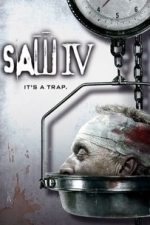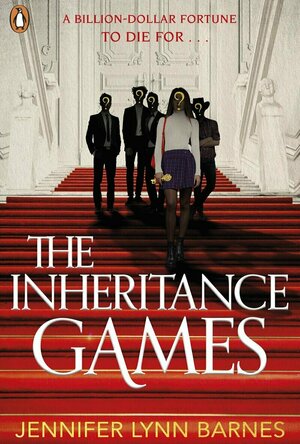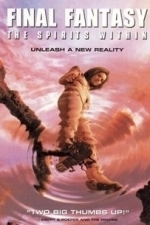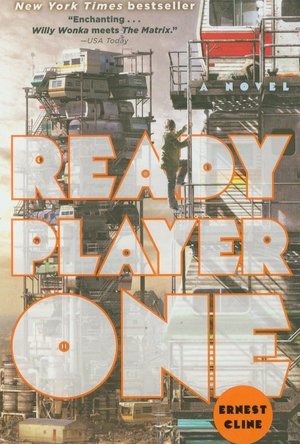Search
Search results
Hideo Kojima recommended Taxi Driver (1976) in Movies (curated)
Jesters_folly (230 KP) rated Saw IV (2007) in Movies
Apr 13, 2021
Contains spoilers, click to show
Continuing on from the events of the previous film a new game is started as the last of the police officers from the other films are tested by jigsaw.
Like the previous films we have more traps and more people being tested and, of course things are not always what they seem.
With 'Saw 4' we get more of a feel of where the series is going, we see more of how Jigsaw recruits his assistants and how he intends to continue his work even when he no longer can.
We also get more on Jigsaws past, although, at times it does seem like it's contradicting what we already know everything comers together by the end of the film.
Saw 4 does a better job with the remaining characters from the previous films, keeping then through the film instead of killing them off in the first few minuets like they did in saw 3 and this film really does do a good job of tying up the loose ends from saw 3 and setting up things to come which is something which could have gone really wrong after the events of saw 3, other franchises have had problems bringing back their main killers and most of the way they used would not work with Saw as the franchise is more grounded in reality than a lot of other slasher type films.
I'm not sure how much of the story is planned ahead and how much is the writers checking the previous films for plot holes and then filling them in but Saw 4 does answer some questions, like how was Amanda able to lift some of her victims. The film also show us things like why Amanda uses a Pig mask.
The Gore level isn't as much as in Saw 3 and a lot of the 'game' is more psychological than the previous films but this fits the overall tone of the series and allows the film to give us more information via flashbacks, which are also used to throw the viewer off what is happening.
Saw 4 is more of the same, traps, games, blood and tests whilst also building on the law and setting up for more movies and ends leaving the viewer wanting more.
Like the previous films we have more traps and more people being tested and, of course things are not always what they seem.
With 'Saw 4' we get more of a feel of where the series is going, we see more of how Jigsaw recruits his assistants and how he intends to continue his work even when he no longer can.
We also get more on Jigsaws past, although, at times it does seem like it's contradicting what we already know everything comers together by the end of the film.
Saw 4 does a better job with the remaining characters from the previous films, keeping then through the film instead of killing them off in the first few minuets like they did in saw 3 and this film really does do a good job of tying up the loose ends from saw 3 and setting up things to come which is something which could have gone really wrong after the events of saw 3, other franchises have had problems bringing back their main killers and most of the way they used would not work with Saw as the franchise is more grounded in reality than a lot of other slasher type films.
I'm not sure how much of the story is planned ahead and how much is the writers checking the previous films for plot holes and then filling them in but Saw 4 does answer some questions, like how was Amanda able to lift some of her victims. The film also show us things like why Amanda uses a Pig mask.
The Gore level isn't as much as in Saw 3 and a lot of the 'game' is more psychological than the previous films but this fits the overall tone of the series and allows the film to give us more information via flashbacks, which are also used to throw the viewer off what is happening.
Saw 4 is more of the same, traps, games, blood and tests whilst also building on the law and setting up for more movies and ends leaving the viewer wanting more.
ClareR (5884 KP) rated The Inheritance Games in Books
Sep 8, 2020
I have read and enjoyed countless YA books, and The Inheritance Games was no exception. It’s touted as a rags-to-riches, Cinderella type story, and there is most certainly a fairytale feel to this. I like fairytales. They’re a gateway drug in to fantasy as a child, I think. Or at least they were for me.
Avery Grambs wants more from her life than living hand to mouth, as she seems to be doing with her sister. Her mother has died, she has no contact with her father. She decides that the best way to change her life is to get a good education at a very good college, with the help of a scholarship. Indeed, she does seem to be very clever.
And then a young man comes to her school, and tells her that she has inherited some of the fortune of Tobias Hawthorne - a man she has never met and knows nothing about. In order to keep her inheritance and deprive the rest of the Hawthornes from getting their hands on the money, Avery has to live for a year in the Hawthorne mansion. Sounds easy, but it’s not. It’s a sprawling, maze-like place, with secret corridors and countless rooms. And the Hawthorne grandsons, on the whole, don’t seem to be hugely keen on her living with them, and neither does their mother.
No-one, including Avery, can understand why she should inherit the Hawthorne fortune. Tobias Hawthorne has one last Rick up his sleeve - a treasure hunt of sorts, that he set before his death for his grandsons and Avery. Just the thing to bring them together - or is it?
I thoroughly enjoyed this. Yes, it’s a bit far-fetched, but who hasn’t wanted to become the equivalent of a billionaire? To never need to worry about money? To have the house version of the Tardis?! This last bit, actually, would totally do it for me - as long as I could cleaners!
I think this will be the first in a trilogy, and I have a sneaking suspicion that I’ll be reading the next one. YA isn’t just for the kids, you know!
Many thanks to the Pigeonhole for making sure I read another one of my NetGalley books, and the publisher for an ebook copy.
Avery Grambs wants more from her life than living hand to mouth, as she seems to be doing with her sister. Her mother has died, she has no contact with her father. She decides that the best way to change her life is to get a good education at a very good college, with the help of a scholarship. Indeed, she does seem to be very clever.
And then a young man comes to her school, and tells her that she has inherited some of the fortune of Tobias Hawthorne - a man she has never met and knows nothing about. In order to keep her inheritance and deprive the rest of the Hawthornes from getting their hands on the money, Avery has to live for a year in the Hawthorne mansion. Sounds easy, but it’s not. It’s a sprawling, maze-like place, with secret corridors and countless rooms. And the Hawthorne grandsons, on the whole, don’t seem to be hugely keen on her living with them, and neither does their mother.
No-one, including Avery, can understand why she should inherit the Hawthorne fortune. Tobias Hawthorne has one last Rick up his sleeve - a treasure hunt of sorts, that he set before his death for his grandsons and Avery. Just the thing to bring them together - or is it?
I thoroughly enjoyed this. Yes, it’s a bit far-fetched, but who hasn’t wanted to become the equivalent of a billionaire? To never need to worry about money? To have the house version of the Tardis?! This last bit, actually, would totally do it for me - as long as I could cleaners!
I think this will be the first in a trilogy, and I have a sneaking suspicion that I’ll be reading the next one. YA isn’t just for the kids, you know!
Many thanks to the Pigeonhole for making sure I read another one of my NetGalley books, and the publisher for an ebook copy.
LoganCrews (2861 KP) rated Final Fantasy: The Spirits Within (2001) in Movies
Sep 20, 2020
I have almost nothing new to add, everything you've heard is true: the animation is almost religiously astounding for the time and even now (in spite of some expected hiccups for the rudimentary motion capture of the time: i.e. speed being an issue - anything that moves above 0.1 MPH has an unsightly motion blur all over it and all the running looks like mall-jogging), CGI wouldn't look this good for years and years afterward but the thing moves at a snail's pace with an oddly apparent avoidance of any sort of fun. Certainly still weird and visually prepossessing enough to get a pass (if this didn't have its unforgettable photorealistic animation it would suck just as hard as any other generic sci-fi fodder, this is home to some truly bracing imagery) - but what the actual hell were they thinking with this writing? All the characters are nonentities in their own story (delivered with similarly boring voice acting by an all-star cast, which most animated films would later replicate directly) and whatever remnants of a story are left behind in the rubble *do* have the potential to be poignant and thought-provoking but are rather just passively mentioned a time or two by way of banal exposition into a mess of things that don't add up to anything more than a stupid story. Can't believe they thought this would work with... anyone (especially fans of the character-driven games given that they turned this into some odd but rather bland alien film for some confounding reason lol) considering all the massive amounts of money they shoveled into it - and minus a few more points for being another tech-heavy future fantasy set in a world that's entirely grey and decrepit. However, the last half hour is some squarely invigorating, enigmatic spectacle that finds an intense beauty in how mind-boggling and glamorous it all is - you'd think the whole thing is always one second away from collapsing into the best of non-western genre surreality. In fact It seems almost unreal in and of itself to be watching something so conventional yet so unrestrained and auteurish. Really needed like eight movies to fully explore these themes but I'm also kind of glad they didn't - half epic and half yawnsville but the epic is more epic than the yawnsville is yawnsville.
LeftSideCut (3776 KP) rated Mulan (2020) in Movies
Dec 6, 2020
I'll start by saying that the original 1998 Mulan is quite possibly my favourite Disney animation, and I personally think it represents the pinnacle of the company's renaissance. With that in mind, I was initially looking forward to seeing the live action adaption when it was first announced, but after last year's re-do of The Lion King, any anticipation I had quickly started to dwindle.
Predictably, the finished result is underwhelming. It's not an inherently bad movie, it's entertaining in parts, and has some decent action scenes, but it's nothing more than a padded out re-tread, and it's hard not to think "what's the point?"
The new material implemented literally adds nothing to the plot, and just draws out the experience, verging on boring more than once, and the familiar stuff just lacks the charm of the original. The decision to ground it more in realism is understandable to a degree - the music would have felt out of place in what is essentially a war film - but the lack of the more outlandish characters such as Mushu impacts the films potential, and the side characters we do get aren't memorable. Honestly? There's just not a lot of fun to be found here.
I did think that Yifei Liu was good in the lead role, and I actually also enjoyed Li Hing, who plays a new character who is probably the most interesting part of the whole thing, and is the only addition that has any worth. It was also a nice touch to see Ming-Na Wen appear for a brief cameo.
As I said, it's not necessarily a bad film, it's just feels pointless and kind of dull. It carries a positive message about being true to yourself and not hiding away. I can always appreciate a movie that gives young girls a hero to look up to, and kids will no doubt have a blast, but the overall experience is a wash out otherwise.
Final thought - obviously, no songs in this one, but I'll Make a Man out of You is a banger and should be present, and replacing it with Donnie Yen doing some cool-as-fuck sword tricks isn't going to distract me from that fact. I see through your mind games Disney...
Predictably, the finished result is underwhelming. It's not an inherently bad movie, it's entertaining in parts, and has some decent action scenes, but it's nothing more than a padded out re-tread, and it's hard not to think "what's the point?"
The new material implemented literally adds nothing to the plot, and just draws out the experience, verging on boring more than once, and the familiar stuff just lacks the charm of the original. The decision to ground it more in realism is understandable to a degree - the music would have felt out of place in what is essentially a war film - but the lack of the more outlandish characters such as Mushu impacts the films potential, and the side characters we do get aren't memorable. Honestly? There's just not a lot of fun to be found here.
I did think that Yifei Liu was good in the lead role, and I actually also enjoyed Li Hing, who plays a new character who is probably the most interesting part of the whole thing, and is the only addition that has any worth. It was also a nice touch to see Ming-Na Wen appear for a brief cameo.
As I said, it's not necessarily a bad film, it's just feels pointless and kind of dull. It carries a positive message about being true to yourself and not hiding away. I can always appreciate a movie that gives young girls a hero to look up to, and kids will no doubt have a blast, but the overall experience is a wash out otherwise.
Final thought - obviously, no songs in this one, but I'll Make a Man out of You is a banger and should be present, and replacing it with Donnie Yen doing some cool-as-fuck sword tricks isn't going to distract me from that fact. I see through your mind games Disney...
Darren (1599 KP) rated President Under Siege (2016) in Movies
Sep 26, 2019
Characters – Michael is the Prime Minister of Belgium, he is about the close one of the biggest deals of his career with a meeting with the President of United States of America, but he must show his levels of commitment to his cause and his family, when he gets blackmailed into killer the President. We get from this character a man that is pushed to his limits to do the right thing and protect his family. Christine is Michael’s wife, captured and forced to wait for her husband to complete his tasks while caring for their children. Eva is the assistant that has a secret with Michael and forced into playing into the games that are being played.
Performances – Koen De Bouw is great in this leading role, we see his desperation to keep his family safe and the turmoil he is feel inside about which decision to make. Tine Reymer is good as the wife which is shown to be strong for the children. Charlotte makes for a good supporting character too. The performances from the whole cast are good because they all play their part in the puzzle.
Story – The story follows the idea that a person in power is blackmailed into committing a crime which will ruin their career, life and legacy. We see how he tries to figure out a way to allude the enemies, while playing along with the game. As for twists and turns we are kept on edge wait to see where thing could go next, this is a highlight of the film and like all time-based movies, this story works for everything we are seeing.
Thriller – This movie does keep us on the edge of our seats from start to finish, we are left to see just how everything will unfold.
Settings – We do get multiple settings for this movie, this shows the life of the Prime Minister when it comes to having guests from America over for big announcements.
Scene of the Movie – Alone with the President.
That Moment That Annoyed Me – Strange decisions being made by the Presidents staff.
Final Thoughts – This is an interesting thriller that does keep us guessing, it shows how politicians can be pushed to limits, even the good ones and throws up a story which would leave us wondering if it could happen in real life.
Overall: Thriller that truly does keep us guessing.
Performances – Koen De Bouw is great in this leading role, we see his desperation to keep his family safe and the turmoil he is feel inside about which decision to make. Tine Reymer is good as the wife which is shown to be strong for the children. Charlotte makes for a good supporting character too. The performances from the whole cast are good because they all play their part in the puzzle.
Story – The story follows the idea that a person in power is blackmailed into committing a crime which will ruin their career, life and legacy. We see how he tries to figure out a way to allude the enemies, while playing along with the game. As for twists and turns we are kept on edge wait to see where thing could go next, this is a highlight of the film and like all time-based movies, this story works for everything we are seeing.
Thriller – This movie does keep us on the edge of our seats from start to finish, we are left to see just how everything will unfold.
Settings – We do get multiple settings for this movie, this shows the life of the Prime Minister when it comes to having guests from America over for big announcements.
Scene of the Movie – Alone with the President.
That Moment That Annoyed Me – Strange decisions being made by the Presidents staff.
Final Thoughts – This is an interesting thriller that does keep us guessing, it shows how politicians can be pushed to limits, even the good ones and throws up a story which would leave us wondering if it could happen in real life.
Overall: Thriller that truly does keep us guessing.
Darren (1599 KP) rated Isabelle (2018) in Movies
Sep 26, 2019
Characters – Michael is the Prime Minister of Belgium, he is about the close one of the biggest deals of his career with a meeting with the President of United States of America, but he must show his levels of commitment to his cause and his family, when he gets blackmailed into killer the President. We get from this character a man that is pushed to his limits to do the right thing and protect his family. Christine is Michael’s wife, captured and forced to wait for her husband to complete his tasks while caring for their children. Eva is the assistant that has a secret with Michael and forced into playing into the games that are being played.
Performances – Koen De Bouw is great in this leading role, we see his desperation to keep his family safe and the turmoil he is feel inside about which decision to make. Tine Reymer is good as the wife which is shown to be strong for the children. Charlotte makes for a good supporting character too. The performances from the whole cast are good because they all play their part in the puzzle.
Story – The story follows the idea that a person in power is blackmailed into committing a crime which will ruin their career, life and legacy. We see how he tries to figure out a way to allude the enemies, while playing along with the game. As for twists and turns we are kept on edge wait to see where thing could go next, this is a highlight of the film and like all time-based movies, this story works for everything we are seeing.
Thriller – This movie does keep us on the edge of our seats from start to finish, we are left to see just how everything will unfold.
Settings – We do get multiple settings for this movie, this shows the life of the Prime Minister when it comes to having guests from America over for big announcements.
Scene of the Movie – Alone with the President.
That Moment That Annoyed Me – Strange decisions being made by the Presidents staff.
Final Thoughts – This is an interesting thriller that does keep us guessing, it shows how politicians can be pushed to limits, even the good ones and throws up a story which would leave us wondering if it could happen in real life.
Overall: Thriller that truly does keep us guessing.
Performances – Koen De Bouw is great in this leading role, we see his desperation to keep his family safe and the turmoil he is feel inside about which decision to make. Tine Reymer is good as the wife which is shown to be strong for the children. Charlotte makes for a good supporting character too. The performances from the whole cast are good because they all play their part in the puzzle.
Story – The story follows the idea that a person in power is blackmailed into committing a crime which will ruin their career, life and legacy. We see how he tries to figure out a way to allude the enemies, while playing along with the game. As for twists and turns we are kept on edge wait to see where thing could go next, this is a highlight of the film and like all time-based movies, this story works for everything we are seeing.
Thriller – This movie does keep us on the edge of our seats from start to finish, we are left to see just how everything will unfold.
Settings – We do get multiple settings for this movie, this shows the life of the Prime Minister when it comes to having guests from America over for big announcements.
Scene of the Movie – Alone with the President.
That Moment That Annoyed Me – Strange decisions being made by the Presidents staff.
Final Thoughts – This is an interesting thriller that does keep us guessing, it shows how politicians can be pushed to limits, even the good ones and throws up a story which would leave us wondering if it could happen in real life.
Overall: Thriller that truly does keep us guessing.
Becs (244 KP) rated Ready Player One in Books
Oct 2, 2019
Genre: Sci-Fi, Fiction, Dystopia, Fantasy
Audience: Young Adult
Reading level: High School +
Interests: science fiction, fantasy, video games, 80’s
Style: Sci-Fi
Point of view: First person.
Difficulty reading: It started off great and I flew through the first half of the book. It’s towards the 55%-75% mark that was a bore for me. But the ending was great!
Promise: Dystopian Sci-Fi video game world
Quality: Minus the 20% that was pretty darn boring and long, the book as a whole was a great read.
Insights: I’m not a huge gaming geek, so without Cline explaining half the time what these gaming terms are, I’d be as lost as a pig in a supermarket. For that, I thank him. It was nice seeing a Dystopian world set in the future that was still in our lifetime. I have never read anything like that – cool to see how Cline wrote it.
Ah-Ha Moment: SPOILERS AHEAD!
Okay, I knew Aech was hiding something. But I could not figure out what it was for the life of me. But when Aech and Parzival first met, in real life, face to face, I WAS NOT EXPECTING him to actually be a ‘her’.
This was me:
Favorite Quotes: “Going outside is highly overrated.” – Yea, I feel ya too. I just want to stay in and read all day every day. Who needs a job, who needs to eat, all we need are books. Am I right?
“You’d be amazed how much research you can get done when you have no life whatsoever.” – I mean, you’re not wrong.
“One person can keep a secret, but not two.” – Secrets, secrets are no fun. Secrets, secrets hurt someone.
Aesthetics: The whole book is an 80’s aesthetic that I love. Plus, it gives a brief inside scoop on the whole “if we don’t care for the planet now, there will be nothing in the future” debate. Which is true, we should care for the planet more than what we do now. I mean we only live on Earth just as much as everybody else. The copy of Ready Player One that I have, is a 2015 Special Edition copy – I love the cover on it.
“People are more than just the way they look.”
Audience: Young Adult
Reading level: High School +
Interests: science fiction, fantasy, video games, 80’s
Style: Sci-Fi
Point of view: First person.
Difficulty reading: It started off great and I flew through the first half of the book. It’s towards the 55%-75% mark that was a bore for me. But the ending was great!
Promise: Dystopian Sci-Fi video game world
Quality: Minus the 20% that was pretty darn boring and long, the book as a whole was a great read.
Insights: I’m not a huge gaming geek, so without Cline explaining half the time what these gaming terms are, I’d be as lost as a pig in a supermarket. For that, I thank him. It was nice seeing a Dystopian world set in the future that was still in our lifetime. I have never read anything like that – cool to see how Cline wrote it.
Ah-Ha Moment: SPOILERS AHEAD!
Okay, I knew Aech was hiding something. But I could not figure out what it was for the life of me. But when Aech and Parzival first met, in real life, face to face, I WAS NOT EXPECTING him to actually be a ‘her’.
This was me:
Favorite Quotes: “Going outside is highly overrated.” – Yea, I feel ya too. I just want to stay in and read all day every day. Who needs a job, who needs to eat, all we need are books. Am I right?
“You’d be amazed how much research you can get done when you have no life whatsoever.” – I mean, you’re not wrong.
“One person can keep a secret, but not two.” – Secrets, secrets are no fun. Secrets, secrets hurt someone.
Aesthetics: The whole book is an 80’s aesthetic that I love. Plus, it gives a brief inside scoop on the whole “if we don’t care for the planet now, there will be nothing in the future” debate. Which is true, we should care for the planet more than what we do now. I mean we only live on Earth just as much as everybody else. The copy of Ready Player One that I have, is a 2015 Special Edition copy – I love the cover on it.
“People are more than just the way they look.”
Emma @ The Movies (1786 KP) rated Fearless (Fe@rleSS_) (2020) in Movies
Aug 18, 2020
On a whim I put this one on, computer games mixed with aliens... why not!
Miles, username Fe@rleSS_, is nearly at the end of his favourite video game, just one level stands between him and the win. The game gives him a special boost... of babies, super babies, it might not be what he expected but it's what he's got and the game is about to get a lot more real. The babies land in a ship in his backyard and his job is now intergalactic babysitter, with the added danger of a villain on their tails.
Fe@rleSS_ has a great cast of talent and the voices fit well with all the characters, but despite that there's little to help this film along. It doesn't matter how well you can perform lines what you've been given is so bland. There are some amusing moments but nothing that raised more than a small nasal exhale laugh.
The animation is nice, fun design and easy to follow, everything is just right... it really does sit exactly in the middle, not awful enough to moan about and not spectacular enough to rave about. It's not great when you start shrugging your shoulders when you talk about things.
My main issue with the film overall is the story. The idea is that something from Miles' game comes to the real world, fine, it's got the Jumanji sound to it. But in practice it doesn't look like that at all. For anyone who isn't young enough not to care about anything but the action it is entirely frustrating. There are many ways to make game life come to the real world, we see it in so many different things, so I don't understand why you wouldn't use something like that. The film makes it appear like it's all in the real world, but when you couple that with the video game aspect it doesn't make sense. The whole baby angle also doesn't make any sense, even if they are adorable.
There's a cute little message of "even dads can be superheroes", though not responsible ones who protect their kids from space battles... beyond that nothing jumped out at me at all. I'm going to be filing it under "it didn't annoy me, but I wouldn't stop and watch it if it was on."
Originally posted on: https://emmaatthemovies.blogspot.com/2020/08/fearless-movie-review.html
Miles, username Fe@rleSS_, is nearly at the end of his favourite video game, just one level stands between him and the win. The game gives him a special boost... of babies, super babies, it might not be what he expected but it's what he's got and the game is about to get a lot more real. The babies land in a ship in his backyard and his job is now intergalactic babysitter, with the added danger of a villain on their tails.
Fe@rleSS_ has a great cast of talent and the voices fit well with all the characters, but despite that there's little to help this film along. It doesn't matter how well you can perform lines what you've been given is so bland. There are some amusing moments but nothing that raised more than a small nasal exhale laugh.
The animation is nice, fun design and easy to follow, everything is just right... it really does sit exactly in the middle, not awful enough to moan about and not spectacular enough to rave about. It's not great when you start shrugging your shoulders when you talk about things.
My main issue with the film overall is the story. The idea is that something from Miles' game comes to the real world, fine, it's got the Jumanji sound to it. But in practice it doesn't look like that at all. For anyone who isn't young enough not to care about anything but the action it is entirely frustrating. There are many ways to make game life come to the real world, we see it in so many different things, so I don't understand why you wouldn't use something like that. The film makes it appear like it's all in the real world, but when you couple that with the video game aspect it doesn't make sense. The whole baby angle also doesn't make any sense, even if they are adorable.
There's a cute little message of "even dads can be superheroes", though not responsible ones who protect their kids from space battles... beyond that nothing jumped out at me at all. I'm going to be filing it under "it didn't annoy me, but I wouldn't stop and watch it if it was on."
Originally posted on: https://emmaatthemovies.blogspot.com/2020/08/fearless-movie-review.html
Lyndsey Gollogly (2893 KP) rated Hideaway ( Devils Night book 2) in Books
Feb 14, 2022
28 of 230
Kindle
Hideaway ( Devils Night book 2)
By Penelope Douglas
⭐️⭐️⭐️⭐️
DEVIL'S NIGHT is returning! Hiding places, chases, and all the games are back...
BANKS
Buried in the shadows of the city, there’s a hotel called The Pope. Ailing, empty, and dark, it sits abandoned and surrounded by a forgotten mystery.
But you think it’s true, don’t you, Kai Mori? The story about the hidden twelfth floor. The mystery of the dark guest who never checked in and never checks out. You think I can help you find that secret hideaway and get to him, don’t you?
You and your friends can try to scare me. You can try to push me. Because even though I struggle to hide everything I feel when you look at me—and have ever since I was a girl—I think maybe what you seek is so much closer than you’ll ever realize.
I will never betray him.
So sit tight.
On Devil’s Night, the hunt will be coming to you.
KAI
You have no idea what I seek, Little One. You don’t know what I had to become to survive three years in prison for a crime I would gladly commit again.
No one can know what I’ve turned into.
I want that hotel, I want to find him, and I want this over.
I want my life back.
But the more I’m around you, the more I realize this new me is exactly who I was meant to be.
So come on, kid. Don’t chicken out. My house is on the hill. So many ways in, and good luck finding your way out.
I’ve seen your hideaway. Time to see mine.
*Hideaway is a romantic suspense suitable for ages 18+. While the romance is a stand-alone, the plot is a continuation of events that began in CORRUPT (Devil's Night, #1). It is strongly recommended that you have read Corrupt prior to reading this.
So I definitely enjoyed this more than book 1. I’m still not Adam of Michael but the rest I’m warming up to! I really liked Banks and I loved to see her finally be loved. Definitely recommend if you like some spice but some of it can be a bit close to the edge. Looking forward to reading more.
Kindle
Hideaway ( Devils Night book 2)
By Penelope Douglas
⭐️⭐️⭐️⭐️
DEVIL'S NIGHT is returning! Hiding places, chases, and all the games are back...
BANKS
Buried in the shadows of the city, there’s a hotel called The Pope. Ailing, empty, and dark, it sits abandoned and surrounded by a forgotten mystery.
But you think it’s true, don’t you, Kai Mori? The story about the hidden twelfth floor. The mystery of the dark guest who never checked in and never checks out. You think I can help you find that secret hideaway and get to him, don’t you?
You and your friends can try to scare me. You can try to push me. Because even though I struggle to hide everything I feel when you look at me—and have ever since I was a girl—I think maybe what you seek is so much closer than you’ll ever realize.
I will never betray him.
So sit tight.
On Devil’s Night, the hunt will be coming to you.
KAI
You have no idea what I seek, Little One. You don’t know what I had to become to survive three years in prison for a crime I would gladly commit again.
No one can know what I’ve turned into.
I want that hotel, I want to find him, and I want this over.
I want my life back.
But the more I’m around you, the more I realize this new me is exactly who I was meant to be.
So come on, kid. Don’t chicken out. My house is on the hill. So many ways in, and good luck finding your way out.
I’ve seen your hideaway. Time to see mine.
*Hideaway is a romantic suspense suitable for ages 18+. While the romance is a stand-alone, the plot is a continuation of events that began in CORRUPT (Devil's Night, #1). It is strongly recommended that you have read Corrupt prior to reading this.
So I definitely enjoyed this more than book 1. I’m still not Adam of Michael but the rest I’m warming up to! I really liked Banks and I loved to see her finally be loved. Definitely recommend if you like some spice but some of it can be a bit close to the edge. Looking forward to reading more.









